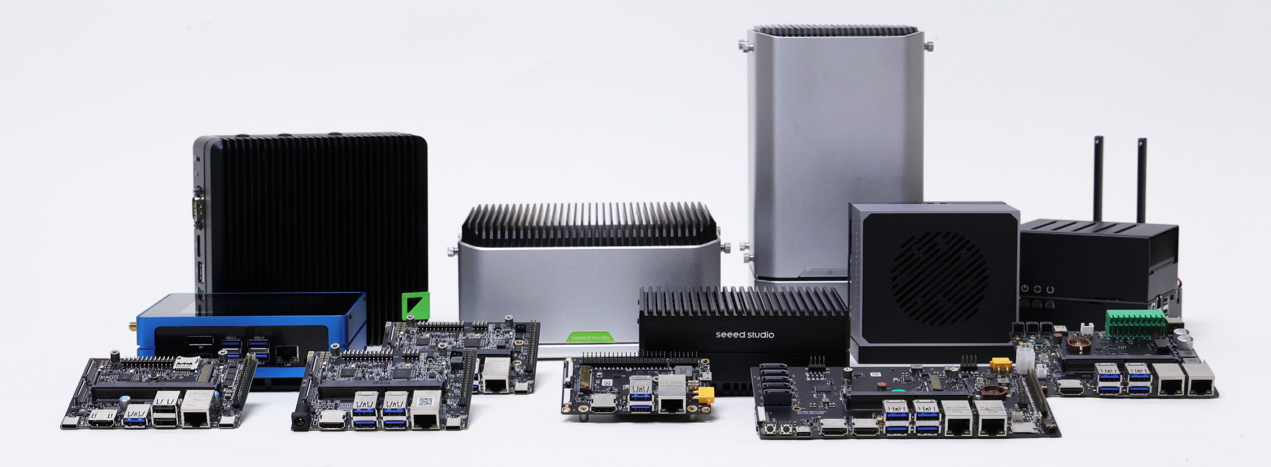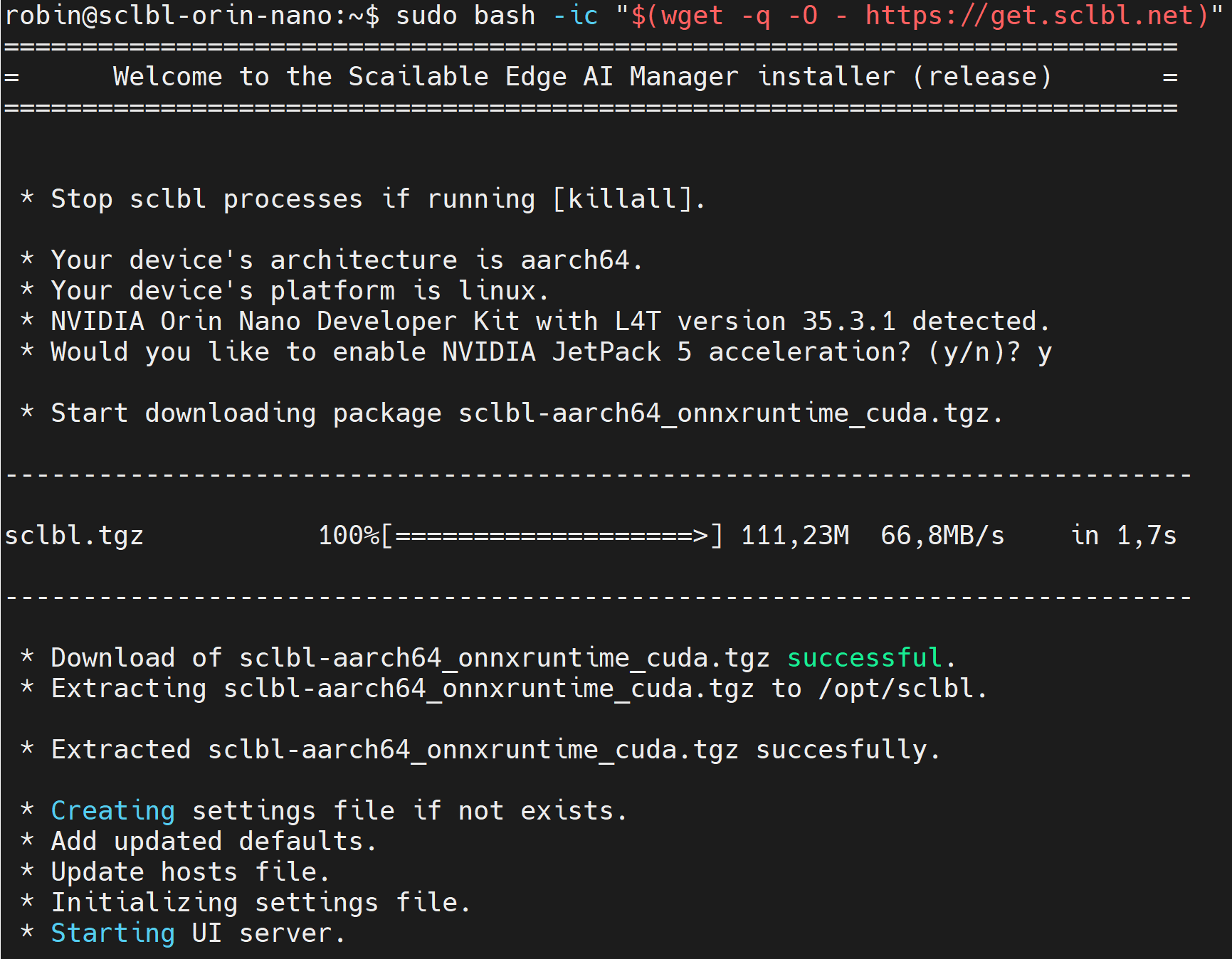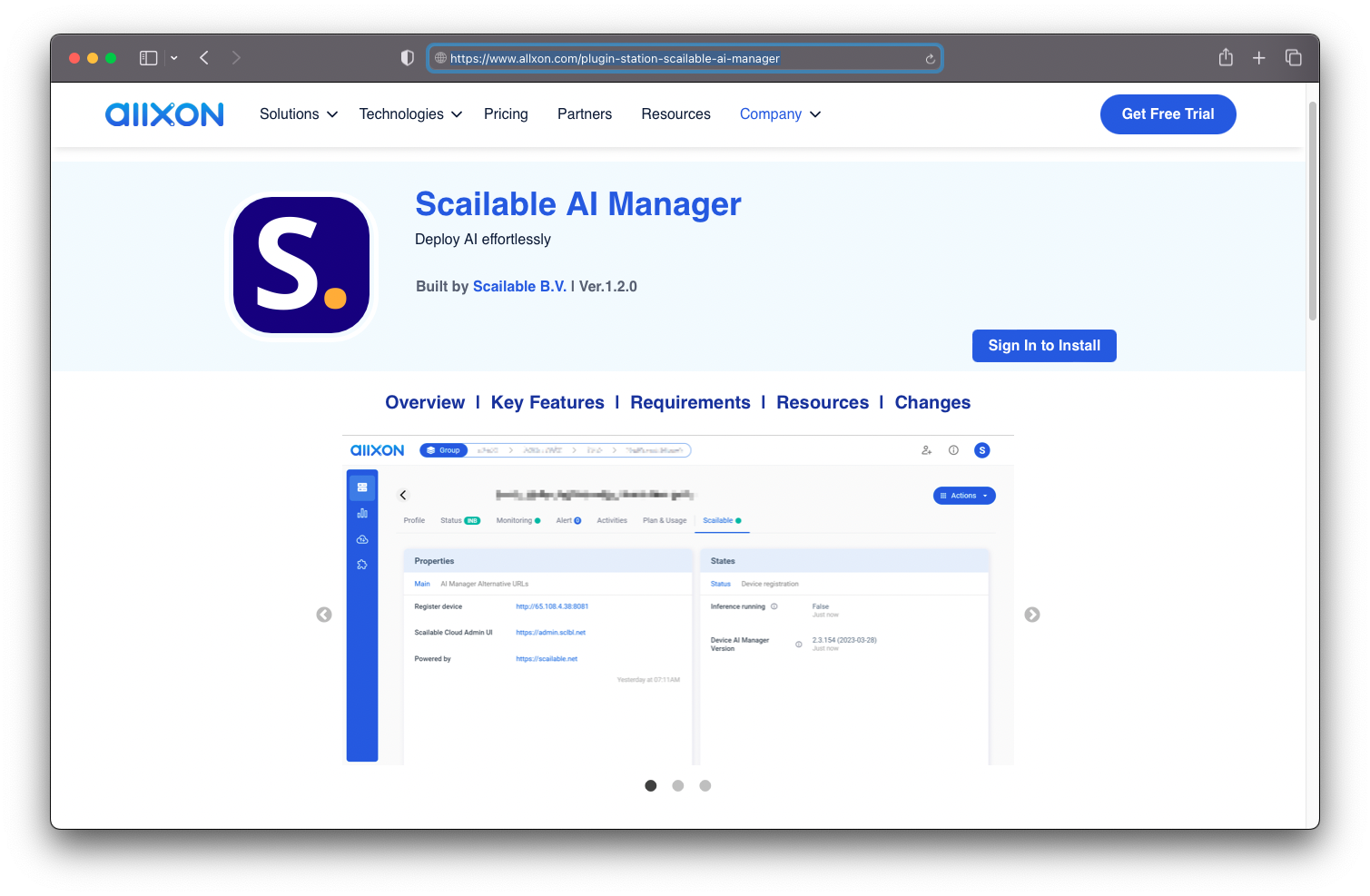We are proud to announce that Scailable has been acquired by Network Optix.
For the announcement on the Network Optix website, move here.
Why We Are Joining Network Optix
Today, the entire Scailable team is joining Network Optix, Inc., a leading enterprise video platform solutions provider headquartered in Walnut Creek CA, with global offices in Burbank CA, Portland OR (both USA), Taipei Taiwan (APAC HQ), Belgrade Serbia, and shortly in Amsterdam (EU HQ).
Network Optix, since its founding, has set out to “solve” video for the most complex business and industrial use cases, and is currently an award-winning and globally leading enterprise video platform software provider. In this blog post, we outline why, as founders (Robin van Emden and myself, Maurits Kaptein) and our entire team, we are proud to join forces with Network Optix.
What We Set Out to Build
Although many factors need to align for an acquisition to materialize—teams need to match, culture and vision need to correspond, and founding teams need to align—I want to focus primarily on the functional reasons why we are pleased with this next step in the history of Scailable.
Scailable was founded in 2020 when we noticed a rapid “liberation” of AI. While it used to be the case that only large companies with tons of data and highly skilled engineers could create AI models for their purposes, we observed that creating AI models was becoming easier by the day. Working at a University in the Netherlands, we saw college students create AI models that would count the number of students present in a classroom using a simple webcam. Moreover, by exploiting advances in transfer learning and novel network architectures, students were able to create, using only a limited number of labelled images, AI models tailored to their specific tasks or interests.
Robin and I started discussing the opportunities this would bring. Within years, we imagined, the local bakery would be able to point a simple and cheap camera towards its most beloved pastry and train an AI model to recognize when her pastry had been baked to perfection, without the need for any engineering skills. The amateur gardener would be able to monitor crop growth—and the need for some extra attention—by simply pointing a camera at the crop and selecting the right AI model to interpret the image and raise an early warning if needed. AI models to automate virtually any task would become accessible to all of us.
However, while technically training models was becoming easy (and yes, fast forward a few years, and it now is indeed super simple to train your AI model; Google’s Teachable machine makes it possible for anyone within a few clicks, and enterprise-level training platforms have steadily emerged), it was somewhat unclear how such a trained AI model would actually be used at a massive scale. How would the amateur gardener be able to “select” the desired model and—in one way or another—endow his camera with this newly learned skill?
We founded Scailable upon the strong belief that the next challenge in AI would be the management and highly efficient execution of “bits of intelligence” (i.e., trained AI models) across a range of edge devices. Moving all the data to the cloud for processing seemed tremendously wasteful: it would be way more privacy-preserving, energy-efficient, secure, and cheap to move the AI model as close as possible to the source of the data. In other words, we should run the AI model on the camera or as close to it as possible. However, no tools to do so existed. AI was mostly confined to large data centers. And, edge devices were extremely diverse, with different chipsets, software, capabilities, etc. The simple “selection” of a model onto your camera to inspect your particular crop of choice was far away. We set out to build these tools.
Within four years, we managed to build tools to convert “cloud-trained” AI models into highly efficient packages that could be moved to virtually any edge device (given sufficient processing). We developed a platform to manage “which-model-is-running-where,” and we developed runtimes so that edge devices with new, AI-optimized, chipsets could easily be added to our ecosystem. We developed highly efficient tools so that developers could create and manage large-scale edge AI solutions. The suite of tools is available today as the Scailable Pipeline SDK and has made its way into a large selection of edge devices.
What We Missed, and Network Optix Had Long Perfected
So, yes, we built the tools to realize a part of the vision that would allow the local baker to benefit from AI. But we quickly faced one big challenge. Digital video, which turned out to be the most prominent data source for most applications, was not easy to deal with. It is hard to deal with the plethora of cameras, standards, resolutions, and formats out there. And, it was even harder to properly manage video streams, visualize in real-time the inferences generated by the AI models, and allow users to interact with the video stream to easily capture training data, configure AI models, and set up pre- and post-processing rules. We built our visualization layer for some specific models, but there was no way we, as a small Dutch startup focusing all its attention on making AI models portable and manageable, were going to solve video.
Enter Network Optix. Founded in 2010 by Nathan Wheeler and Sergey Bystrov, Network Optix created the leading enterprise video platform. Interestingly, it is open, highly efficient, focused on the edge, and does everything one would need to deal with video. And, it does so at scale: Network Optix grew all around the world, and by providing developers the tools to deal with video, they have globally become the go-to video toolkit enabling the efficient management of millions of video channels. Long before we recognized the problem, Nathan and Sergey, and their amazing global team, had already perfected the solution, scaled it, and set up the company to market it globally.
A Shared Vision for the Enterprise Video Operating System
We had our first interactions with Network Optix in spring 2023. Initially, we started using their awesome video tools to visualize output from AI models deployed using our SDK. We next integrated our runtime into Nx Meta as a plugin to enable extremely easy camera configuration, stream management, and AI inference. Working initially with their team in Europe, we had a chance to meet up with their American counterparts and their CEO during the Embedded Vision summit in Santa Clara in May 2023.
I was, and still am, struck by an early conversation with Nathan Wheeler who explained why he set out to build Network Optix. Recognizing very early on the power of digital cameras that were hitting the market around that time and were starting to be cheaper, smaller, and everywhere, he talked about how camera technology would—for example—help you run a restaurant or bar. With cameras everywhere, you could “see” which bottles were running low and ensure your orders were timely. You could “watch” how your precious space was used and optimize the layout. Or, you could even recognize a customer who had remained unattended for too long and ensure a visit by your staff. With video everywhere, the local bar owner could have all the information needed to run their business efficiently at her fingertips.
It was amazing to see how the vision of the power of video—combined with the ability to distil actionable data from video streams—would benefit any business. Effectively, with video solved and the right processing in place, cameras and software together can be used to create your “enterprise video operating system.” A system that provides you with all the data you need to run your business as efficiently as possible. Anything a human can see—the drinks going low, a customer unhappy, the state of a pastry, or a dropped jacket in the hallway—can be detected and cared for. Nobody will actually be looking at these video streams as long as it’s not necessary; digital cameras, together with the right AI model, provide the business intelligence data needed to optimize your operations. Available for everyone.
We are now extremely excited to join Network Optix and to integrate our pipeline SDK into their software platform. Integrating our software allows edge AI models, running on video input, to reach millions of people globally. And jointly, we will allow the massive, global scale rollout of true video intelligence in a way that preserves privacy and reduces the carbon footprint of our global AI infrastructure. Can you imagine we are looking forward to 2024?
An Amazing Team and a Global Presence
We hope the above details why, functionally, and with a shared vision of the future, it makes 100% sense for us to join Network Optix. Now, this much was starting to be clear by the end of summer last year. However, functional sense and a shared vision are not sufficient. We needed to establish a match of the team, the working culture, the work ethics, and all that makes life and work pleasurable and effective. We spent a lot of time working with Network Optix to learn how they view managing and growing their company, how they collaborate, and how they view their position within the larger ecosystem of solution developers, hardware manufacturers, and end-customers. Up to today, we have been extremely pleasantly surprised by the strong alignment on all ends, and we are proud, from today onwards, to be part of the global Network Optix team.
Thanks, everyone.
Maurits & Robin
We would also like to take this opportunity to thank everyone involved in growing Scailable. From our first clients and partners, such as Advantech Europe, to our earliest team members such as Benedicte Lochtenberg and everyone else who contributed to our growth along the way (there are too many to mention all by name, you know who you are). Most noticeably, we would never have gotten to where we are today without strong backing and support that reached far beyond mere financial support of our investors: Sander Vonk and the whole team at Volta, and Robin Hendrickx and the team at BOM. We would encourage anyone who is aspiring to bring their technical innovations to market to reach out to them and get the help, inspiration, and guidance you need. We would also like to extend our gratitude to Rabobank for being the provider of a loan in the early stages of our development. Last but not least; we could not have made it here without Jeroen Ghijsen on our board.

Scailable supporting Seeed NVIDIA devices
We are excited to announce support for Seeed’s NVIDIA Jetson devices. The AI manager, and all our edge AI development tools, can now readily be used on Seeed devices. As we all know, edge AI solutions often start from creative ideas to optimize business processes with AI. These ideas evolve into Proof-of-Concept (PoC) phases, where […]

From your CPU based local PoC to large scale accelerated deployment on NVIDIA Jetson Orin.
Edge AI solutions often start with a spark of imagination: how can we use AI to improve our business processes? Next, the envisioned solution moves into the Proof-of-Concept (PoC) stage: a first rudimentary AI pipeline is created, which includes capturing sensor data, generating inferences, post-processing, and visualization of the results. Getting a PoC running is […]

Allxon and Scailable Unite to further Revolutionize Edge AI Deployment
In a groundbreaking development that promises to reshape the landscape of edge AI deployment, Allxon and Scailable have joined forces to unveil the Scailable AI Manager, a cutting-edge edge AI deployment middleware now available as a plugin in the Allxon Plugin Station. This strategic collaboration brings together the expertise of Allxon in image-based over-the-air (OTA) […]